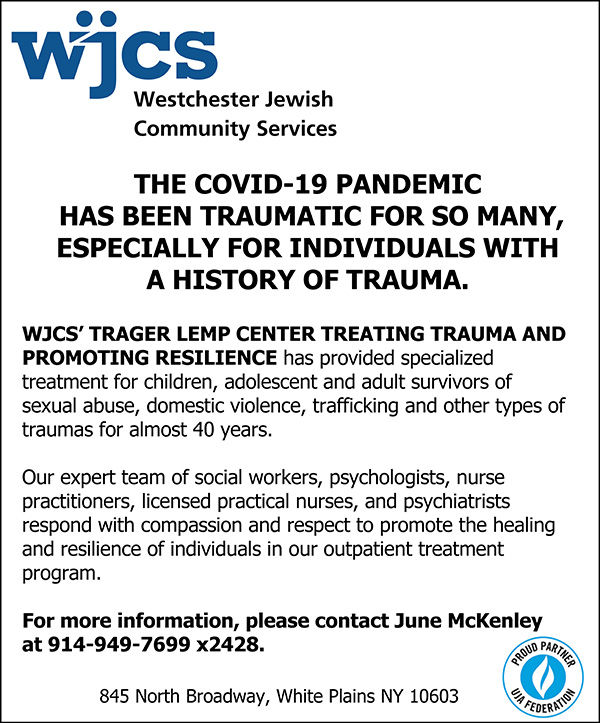More than two years into the COVID pandemic, we are probably all familiar with the term “burnout.” According to the literature, burnout is defined as a syndrome resulting from one’s profession that is comprised of three dimensions of symptoms: fatigue and emotional exhaustion, a low sense of personal accomplishment or performance, and a feeling of depersonalization or cynicism (Maslach & Leitner, 2016).

Countless research articles and news reports have highlighted the mounting crisis of burnout during the COVID pandemic, especially in healthcare workers. While burnout was a significant concern before COVID, the burnout crisis only exploded once the pandemic began due to a myriad of factors, including increased work hours, clinicians feeling the same sense of personal vulnerability as experienced by their clients, reduced social contact, and severity of client concerns. Since the pandemic began, healthcare workers have reported decreasing job satisfaction, adverse mental health outcomes and, for many, the intent to leave their professions. With an influx of referrals on an already overtaxed mental health system, mental health professionals are particularly at risk for becoming “crispy fried.” A recent advisory by the U.S. Surgeon General called attention to this issue, urging healthcare organizations to make efforts to assess and respond to burnout among their staff (U.S. Department of Health & Human Service, 2022).
At Westchester Jewish Community Services (WJCS), one of the largest providers of licensed, community-based mental health services in Westchester County, NY, we assumed the challenge of measuring burnout in our clinical staff and taking steps to address it. To assess clinicians’ needs, our research team conducted a survey one year after the start of the pandemic and achieved a response rate of about 70% (N = 61). The abbreviated version of the Maslach Burnout Inventory (MBI-9; Maslach, 1993) and select items from the Compassion Fatigue Satisfaction Self-Test (CFS; Figley, 1999) were used to assess symptoms of burnout.
One standout finding from this survey was that 70.6% of clinicians at WJCS reported high levels of burnout in at least one of the three facets of burnout (emotional exhaustion, reduced personal accomplishment, and depersonalization). Specifically, 45% of clinicians reported experiencing emotional exhaustion and 59% experienced a reduced sense of personal accomplishment. More than one-tenth of respondents, 11.5%, reported high levels of depersonalization or cynicism. Although 51.5% of respondents reported often feeling weak, tired, and run down from their work, the majority (80%) reported that they were able to manage all clients on their caseload without significant feelings of compassion fatigue. On the positive side, it was encouraging to learn that, despite overwhelming high rates of burnout, the majority of clinicians (92%) reported feeling emotionally connected to others in their lives.
Survey findings were shared with WJCS’s leadership team and presented to the clinicians in an effort to obtain more in-depth, qualitative feedback that may not have been fully captured in the survey. This additional feedback was obtained in two ways. First, reactions and comments were solicited in 30- to 60-minute discussion forums in staff meetings across the agency. During these meetings, clinicians emphasized the main concerns driving their burnout: time pressures, productivity expectations, increased work hours, excessive time spent on screens due to telehealth, tedious administrative tasks, and a culture (perhaps inadvertently) rewarding overworking. Clinicians were also given an additional survey to collect ideas for how to rectify high burnout levels and improve the quality of work in their positions at our agency.
After reflecting on the data that was collected, our efforts shifted to learning about interventions to address burnout. We reviewed the literature for evidence-based approaches to approach burnout effectively in behavioral health settings. With the help of the leadership team, we brainstormed several feasible recommendations for agency staff and presented preliminary ideas to clinicians, generating ideas and additional suggestions that were then shared with the leadership team to further identify and hone action steps.
Action steps were organized into three categories: increasing awareness about burnout (among staff members as well as leadership and supervisors), improving access to resources, and fostering social and emotional support for clinicians. The first category included goals related to reducing stigma about burnout so that clinicians would learn to recognize it in themselves and feel comfortable obtaining support from supervisors and colleagues, reinforcing the need for self-care, and shifting the overall agency culture to be more sensitive to the needs of clinicians. The second category encompassed action steps such as improving access to clinical resources and trainings (e.g., lists of engaging telehealth activities for youth, additional trainings in evidence-based treatments used at the agency given by WJCS or outside partners), and resources to assist with other stressors that might be encountered (e.g., increasing awareness about and effectiveness of employee assistance services and existing WJCS grief groups for clinicians who have lost clients). We also worked with our clinics to set up informal check-in times with coworkers (e.g., drop-in hours held by supervisors where clinicians could stop by), increased our efforts to express gratitude to our staff (e.g., emails from supervisors and shout-outs from team members recognizing stand out performance by clinicians), and worked on giving more advanced notice for wellness events, such as seminars on nutrition and stress management.
The final process was implementation of these action steps in collaboration with the leadership team. The action steps that were considered most feasible and/or most urgent were prioritized (e.g., establishing regular check-ins to monitor burnout and provide burnout-related consultation at all staff meetings, protecting consultation time from counting against productivity, providing additional time for administrative tasks when necessary, providing scheduling resources, such as sample schedules, reducing productivity requirements, etc.). Continuous discussion with various staff members was sought at various points to share progress, collect feedback, and shape the interventions to be most effective. This ongoing process between leadership and clinician feedback resulted in creative solutions to further inform change. For instance, clinicians pointed out to us that despite reductions in productivity requirements (based on their feedback), their caseload sizes still meant that they had to manage many cases. This forced us to go back to the drawing board and think of additional ways to reduce caseload sizes, such as the use of maintenance groups for stable clients and the use of risk stratification measures in providing care.
Upon reflection of this initiative in follow-up meetings, clinicians consistently expressed that the experience of having their voices heard was the most important byproduct of this effort. Clinicians noted that the invitation to openly share their concerns helped counter the sense of hopelessness commonly found in clinicians experiencing burnout. Just knowing that the agency leadership was invested in their wellbeing was helpful. While some might argue that the discussions and surveys were additional tasks for staff members to complete, clinicians provided overwhelmingly positive feedback that the collaborative nature of this process was immensely helpful. They noted their appreciation for their involvement in the process and open communication, which led to more attention being cast on clinician challenges, including large caseloads and high productivity requirements. These conversations highlighted areas in which further work and collaboration is needed.
Although we cannot be certain that our results generalize to all clinicians in behavioral health settings, they do echo numerous other findings from the literature concerning levels of burnout among healthcare workers during the pandemic. We do feel certain, that this process helped us begin an important conversation and identify vital action steps that have started to make key differences for our clinical staff.
Jessica Bonumwezi, PhD, and Russi Soffer, PsyM, are Psychology Fellows and Elana Spira, PhD, is Director of Research at Westchester Jewish Community Services.
References
Figley, C.R. (1999). Compassion Fatigue. In B. H. Stamm (Ed.), Secondary traumatic stress: Self-care issues for clinicians, researchers and educators, 2nd Ed. Lutherville, MD: Sidran Press. http://www.sidran,org/digicart/products/stss.html
Maslach, C. (1993). Burnout: A multidimensional perspective. In W. B. Schaufeli, C. Maslach, & T. Marek (Eds.), Professional burnout: Recent developments in theory and research (pp. 19–32). Taylor & Francis.
Maslach, C., & Leiter, M. P. (2016). Understanding the burnout experience: recent research and its implications for psychiatry. World psychiatry: Official journal of the World Psychiatric Association (WPA), 15(2), 103–111. https://doi.org/10.1002/wps.20311
U.S. Department of Health & Human Service. (2022). Addressing health worker burnout. Retrieved August 5, 2022, from https://www.hhs.gov/sites/default/files/health-worker-wellbeing-advisory.pdf







